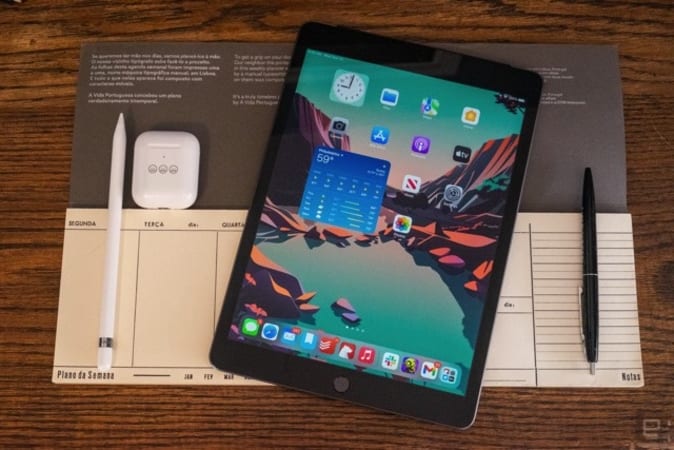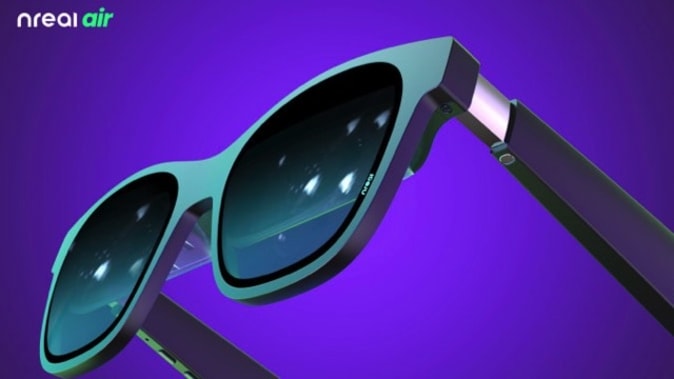If you’ve been holding out on a possible iPad purchase (or upgrade), this might be the time to strike. Apple’s newest base model iPad is now on sale, and we’ve got a detailed review on what is an incremental upgrade on what is, at heart, the same design we’ve had for many years now.

Engadget
If you’re looking for an iPad with a design twist — or at least a smaller footprint — there’s the iPad mini, pulling some of the redesigned iPad Pro DNA into a smaller package. That includes something close to an “all-screen” design, with an 8.3-inch Liquid Retina display and power button with TouchID on the edge that supplants the need for a home button.
Meanwhile, the OG iPad design, so very lightly refreshed for 2021, doesn’t put a foot wrong — and it’s the cheapest new iPad you can get. For that $330, as Nate Ingraham’s review lays out, the hardware is powerful and the battery life is outstanding.
It has Apple’s A13 Bionic chip, which first appeared inside the iPhone 11, circa 2019, but still an upgrade from the last vanilla iPad iteration. But yes, it’s not as powerful as the newer chips in the iPad Air and just-updated iPad mini.
If we sidestep the Pro models, tablet shopping will boil down to the iPad mini, Air or this new standard model. You could say this is some degree of choice — I just wish there was more tablet competition that didn’t run an Apple OS. Android tablets are still, typically, cheaper options that always leave me wanting.
— Mat Smith
The former employees were outspoken critics of many Amazon policies.
Amazon was supposed to defend its decision in court to let Emily Cunningham and Maren Costa go last year. The former Amazon employees were outspoken critics of the company, and both were, according to the National Labor Relations Board (NLRB), illegally fired. The e-commerce giant didn’t have to defend itself, however, because it has settled with the affected parties shortly before the hearing could take place.
The settlement still needs to be approved by the NLRB regional director in Seattle, but Cunningham and Costa are already considering the settlement a victory. In a joint statement, they said the development is a “win for protecting workers’ rights.”
Continue reading.
Huh, that looks a little familiar.
Subaru has shown the first video of its first EV, the 4×4 Solterra crossover, essentially confirming it’s a slightly reworked version of Toyota’s upcoming bZ4X EV. We’re still waiting on key details, like price and battery capacity. It’s set to arrive in the US and other markets next summer. For now, take a closer look at the teaser.
Watch here.
A bit of Dolby Atmos makes all the difference.

Engadget
Sonos has added Dolby Atmos support to the original Beam, which turned out to be a popular soundbar for those looking to upgrade their TV sound system in a simple way — and introduce them to the Sonos cinematic universe of speaker add-ons and upgrades.
The new Beam, while more expensive than a lot of the competition, is another compact soundbar that sounds far more immersive than you’d expect. According to Devindra Hardawar, it also does a decent job with music and still works well with other Sonos speakers. Read on for his full review.
Continue reading.
The Nreal Air also work with iOS devices.

Nreal
Chinese company Nreal has launched a new model of augmented reality glasses called Air, designed with streaming shows and playing mobile games in mind. The glasses still need to be tethered to a phone, like their predecessor, the Light, but they’re a lot lighter (77 grams to Light’s 106 grams) and look more like an ordinary pair of sunglasses.
Nreal also improved the display, which has the capability to project a massive virtual screen up to 201 inches in size, and refreshes at up 90Hz. The new model has no motion tracking at all, and a company spokesperson told us that, based on Light’s usage, Nreal expects most owners to use the Air simply to watch shows on YouTube.
Continue reading.
The Kiyo X webcam costs $80, while the Ripsaw X capture card is $140.
Razer’s latest streaming gear aims directly at newbies, starting with its new Kiyo X USB webcam. As with a lot of current games, you can choose between optimizing your webcam feed for fidelity or framerate with 1080p 30 fps and 720p 60 fps options.
There’s also the Ripsaw X capture card, for footage up to 30 frames per second in 4K. Razer says the device delivers “near-zero latency” through its HDMI 2.0 and USB 3.0 connectivity. You can hook it up to a camera with HDMI output to use it as a high-end webcam or capture gameplay from a console. The Kiyo X cam costs $80, while the Ripsaw X will run you $140. Both are available now.
Continue reading.
The biggest news stories you might have missed
All products recommended by Engadget are selected by our editorial team, independent of our parent company. Some of our stories include affiliate links. If you buy something through one of these links, we may earn an affiliate commission.
Credit: Source link


Comments are closed.